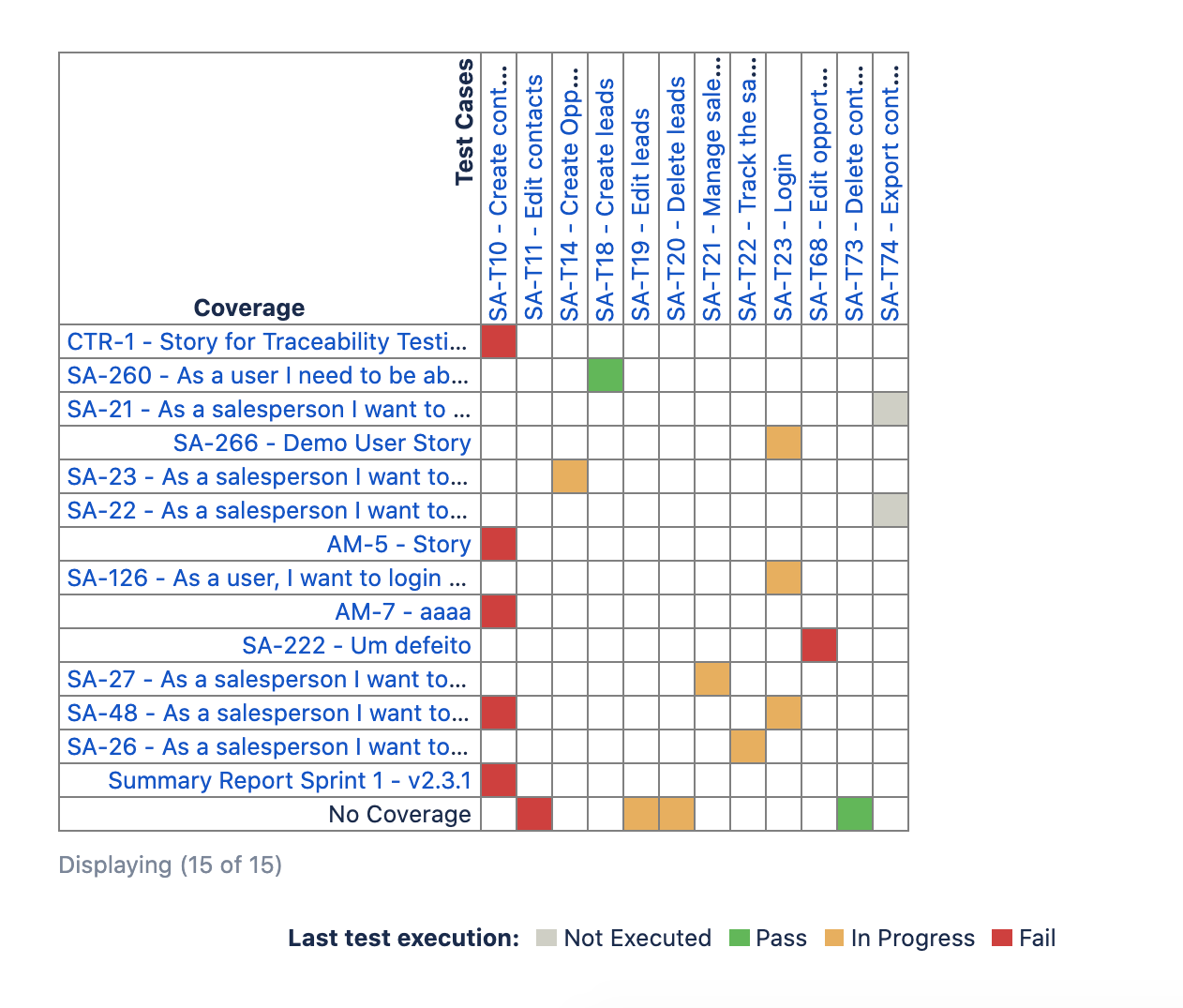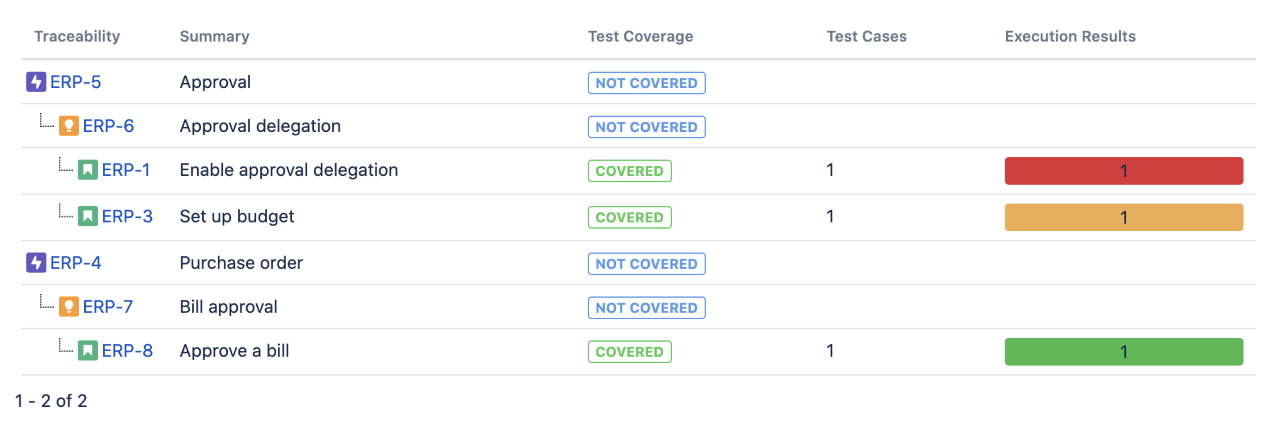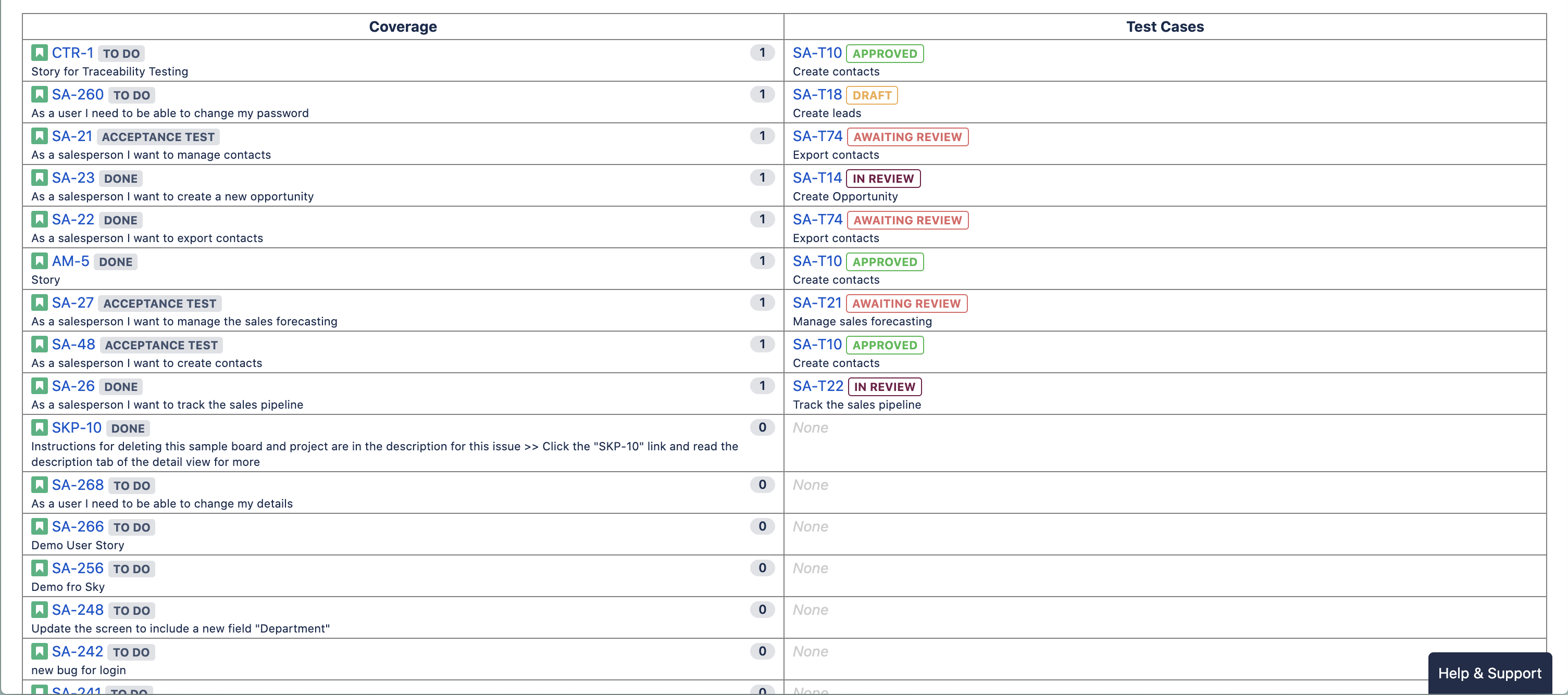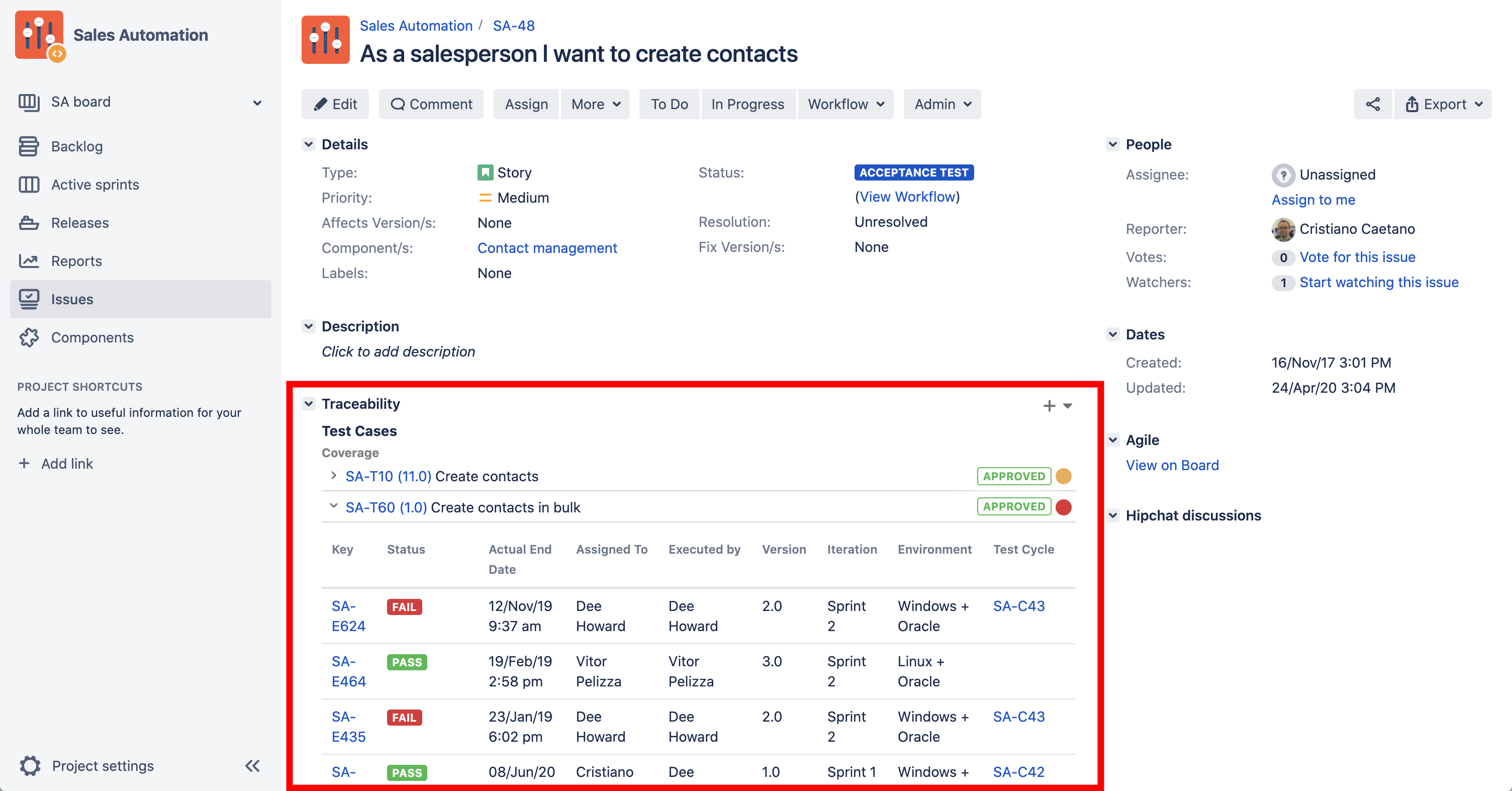Traceability is important for keeping everyone in sync throughout the software development lifecycle. It reduces unnecessary requirements, helps control costs and prevents project delays. It also ensures that the scope of the project is not expanded by adding extra code or test cases that are not specified in the requirements. But how can you ensure that traceability in Jira stays top notch? Let’s take a closer look.
1. Manage frequently changing requirements
To manage continuously and frequently changing requirements you need to have a proper process for systematically analysing the impact of each proposed change. A great benefit to traceability tracking is its ability to assess the impact of changes on requirements. This helps you to understand the implications, identify associated tasks, and estimate the effort required to implement the change.

Traceability matrix report in TM4J
When project requirements change, a traceability report allows you to identify all of the impacted artifacts. As a result, you are able to quickly assess the impact of the change and act accordingly. TM4J - Test Management for Jira has traceability matrices reports that reduce the risk that one or more of the affected artifacts are forgotten, potentially leading to incomplete implementation or validation of a change.
2. Streamline reviewing and auditing process
Accurate reviews and audits have become essential to the success of software companies, especially in regulated industries. For those industries, traceability tracking is actually a requirement and crucial tool that helps auditors to review requirements and impacted artifacts. Well established traceability links can streamline reviewing and auditing process. In addition, inconsistency and incompleteness can be detected and fixed early, and with minimal cost and effort.

Traceability tree report in TM4J
TM4J enables the auditors to reference and correlate all artifacts back to the requirements in a consistent and systematic manner, helping them check for compliance with standards, guidelines, specifications and procedures.
3. Look for gaps in coverage
Establishing traceability ensures each requirement is covered for at least one test case. It helps you identify gaps in test design and coverage so that proper measures can be taken to resolve them. Coverage reports make it easier to identify orphan requirements or test cases, if applicable. TM4J provides test coverage reports for each step of the software development process.

Coverage report in TM4J
End-to-end traceability with TM4J
From identifying gaps in test design down to analyzing the impact of changing requirements, traceability tracking with TM4J provides you with visibility across your entire test management lifecycle. It’s all visible and manageable in Jira, leaving you to focus on managing the test coverage and execution.

Managing test cases from a Jira issue
Whether you are still using Excel spreadsheets or already employ some tests management solution, you can start a 30-day free trial to get a first-hand look at TM4J. Or request a demo and we’ll be happy to show how it can help you achieve better traceability in Jira.